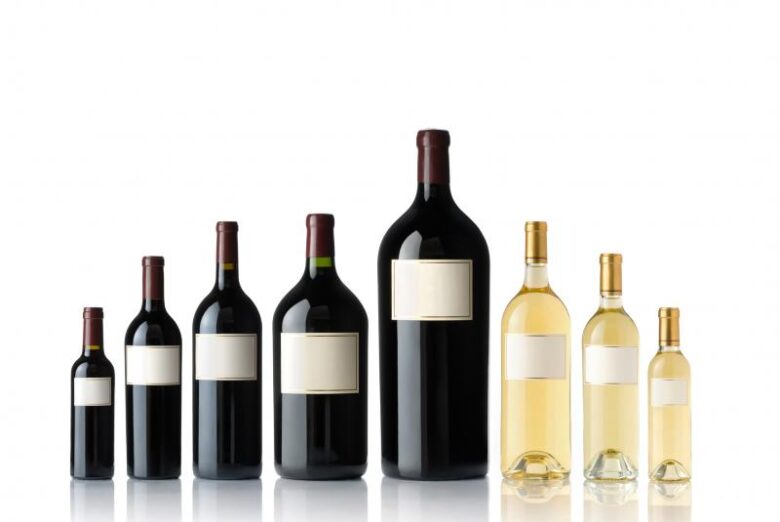Proper labeling is an indispensable element of marketing, which contributes to brand recognition and product promotion. Manufacturers place logos, images, data, and information (shelf life, production date, content, etc.). That’s why every business must pay attention to the right choice of appropriate sticker technologies.
A well-chosen and developed labeling strategy leads to brand vision and eye-catching customization, as well as ensures that stickers will remain intact through cold/wet environmental conditions.
Contents
Key Factors to Take into Account when Choosing Suitable Technologies

source:freepik.com
A preparatory stage is far more important since a proper analysis of all questions allows for eliminating mistakes. Before you design the final label for wine, analyse the following points:
1. Features of container labeling equipment. Think about what materials are used to pour liquids. For example, glass, plastic, semi-glass, etc. Depending on the type of bottles, different labeling strategies are used.
2. The required transparency. How much space must be left transparent? Or is it a matt bottle? If you need to leave a lot of space transparent, then the type and size of labels must be customized.
3. Adhesion strength. Businessmen must make sure that stickers are reliably and durably attached and won’t come unstuck when put on store shelves.
4. The environment of the final product operation. Analyse where bottles will be stored. Will it be an open or closed space with wet/dry air and low/high temperature?
Judging by these criteria, make an approximate plan for future labels.
How to Choose the Right Wine Sticker Material?

source:lovetoknow.com
The selection of a suitable wine label material is an indispensable part of layout development. First of all, you should clarify what material will be used. Consider the following parameters:
1. Types of labels. Brand logos and information can be applied to papers, polyethylene or polypropylene films. According to the kind of sticking, they are divided into peel-off and laminated ones. Some labels can also have promo codes.
2. Durability and storage of wine face materials. Analyse the environment in which bottles will be stored. Consider environmental features if there are any. Make sure that sticker materials are durable enough to withstand environmental conditions.
3. Face materials and print options. Digital and flexographic are the two most common types of label printing. Both solutions are applicable to labels and use diverse colors. However, digital technology is preferable for small runs, while flexographic printing is the best option for large circulations.
Once you’re done with these points, it’s time to think about security and additional protection.
Ways to Protect Labels
Custom wine stickers can be secured with additional protective features. These include:
1. Lamination with special films. Laminating allows users to apply a protective film on the surface of the label. Once the sticker is printed, lamination serves as a sort of shell that protects your design from scratches and provides water resistance for the base material.
2. Varnishing provides products with resistance to mechanical stress and improves their aesthetic appearance. There is selective varnishing, in which individual details of the image are covered with varnish, and total varnishing, when varnish is applied to the entire surface of labels on wine bottles. UV varnishing makes the product more appealing.
3. Stamps with high adhesive properties for containers with rough surfaces. These labels have improved adhesive characteristics to guarantee perfect sticking. Durable glue is used to attach them to bottles.
Modern bottles for alcohol have vivid stickers with all the needed information. Most of them are printed using flexographic technology.
Flexographic Printing for Self-Adhesive Stickers

source:decanter.com
Flexography is the leading technology for applying images and logos to wine bottles. Up to 10 colors can be used and mixed. The method is ideal for medium and large runs. This printing technique allows improving the quality and attractiveness of stickers.
The whole production circle is the main feature of flexography. Thus, the speed of label production increases. Machinery applies colors, varnish, laminate, and prints all sorts of information during one production process.
Modern technology and equipment allow for the implementation of innovative solutions to improve the quality of stickers and prolong their service period. Flexographic printing allows using the following technologies:
- HD Flexo is a combination of high-resolution optics with specialized screening. This method allows increasing detailing and image clarity.
- Multicolor is technology that allows mixing and using more than 3 colors, which contributes to making images and labels more vivid, saturated, and detailed.
Flexographic printing is the best choice for manufacturers who need to label their wine products for sale. It is possible to design any image and logo. The method deals with a wide range of colors and prints HD stickers.
The industry of package production offers diverse solutions for defining hard drinks. Labels can be additionally protected against abrasion, tears, or peeling off. Metalized, laminated, or varnished products are printed for large facilities.
Alcohol bottles are usually expensive, which demonstrates nobility and status. An embossed wine label looks original and outstanding. Thus, wine label design is a responsible task. High requirements are set for wine bottles and their stamps. Stickers must be durable, well-adhesive, clear, and bright.
At the end of the day, choosing the right material for your wine labels ensures that you have a product that both looks and feels great. The material should not only be chosen based on aesthetics but also durability. It must be able to withstand various environmental conditions including exposure to light and heat if you plan to sell it in certain regions or climates.
Your packaging can have a huge impact on how wine enthusiasts perceive your brand and ultimately decide whether or not to buy your product. Additionally, taking into consideration the cost of printing and labor will help you determine how much of an investment you’re willing to make in order to create something beautiful that customers will love.
